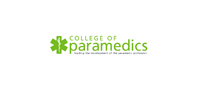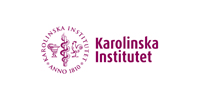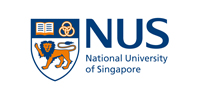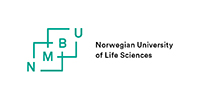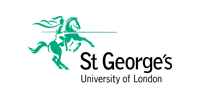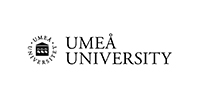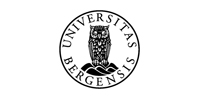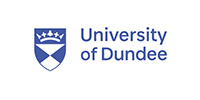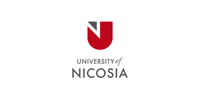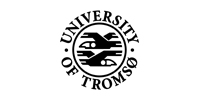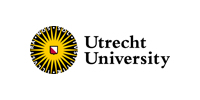In traumatology, distinctions are made between complex and non-complex wounds and between open and closed wounds. Wounds can also be categorised according to their cause, such as vulnus scissum (incised wound), vulnus contusum (contusion), or vulnus conquaessatum (crushing wound).
A complex wound involves not only the skin, the subcutis, and muscles, but also large vessels, nerves, or bones. A non-complex wound generally does not extend beyond the subcutis.
Open wounds disrupt the connection between all skin layers and include incised wounds, penetration wounds, puncture wounds, bites, perforating wounds, and lacerations. Closed wounds include contusions, closed fractures (no exposure to the outside world), and abrasions (because not all tissue layers of the skin are penetrated). Abrasions (excoriation) are characterised by pinpoint bleeding from the dermis. Symptoms of an incised wound are dehiscence (separation of the edges of the wound), bleeding (diffuse, venous, or arterial), and pain.
Wound Healing Occurs in Three Phases
Phase One: (Inflammatory Phase)
Duration: 5-7 days.
Characteristics: Blood clotting and inflammatory reaction.
Blood Clotting:
- Initiated by vasoconstriction followed by activation of the clotting mechanism. The combined actions of thrombocytes, tissue factors, and clotting factors produce cellular and humoral reactions.
- The clotting cascade progresses from thrombocyte aggregation to the formation of fibrin threads that cross-link to form a plug that will staunch the flow of blood.
Inflammatory Reaction:
- Vasodilatation occurs after 5-10 minutes to achieve haemostasis.
- Fluid and cells are exuded through the epithelial wall of capillaries.
- Chemotaxis and proliferation of granulocytes and monocytes ensure the removal of damaged tissue and bacteria. The formation of endothelial cells and fibroblasts is stimulated.
Phase Two: (Proliferation Phase)
Duration: One or more weeks, overlapping with phase one.
Characteristics: Migration of endothelial cells to the wound area (angiogenesis), proliferation of fibroblasts.
Migration and Proliferation of Fibroblasts:
- Fibroblasts are responsible for the production of collagen, elastin, and ground substance. The mechanical strength of the healed wound depends on these substances.
Angiogenesis:
- Endothelial cells create a capillary network. This entire process leads to the formation of granulation tissue.
Phase Three: (Differentiation Phase)
Duration: A few weeks or months.
Characteristics: Maturation and contraction.
Maturation:
- The definitive scar forms. This process is stimulated by the mechanical burden of the scar.
- Pressure and tractive forces are very important biological stimuli that dictate the type of tissue that will ultimately form.
Contraction:
- Fibroblasts transform into myofibroblasts with contractile properties, whereby the edges of the wound are pulled together.
- This mechanism usually occurs during secondary wound healing. It reduces the size of the defect that must be bridged through epithelialisation.
Lastly, over the course of months or years, the colour of the scar may change due to the further decrease in capillaries. Further remodelling of the scar also occurs, which produces the definitive scar with its original tissue tensile strength, form (keloid, hypertrophy, width) and pigmentation.
Knowledge of the processes that occur during phase three is important because the mechanical burden on the scar has a clearly positive effect on the quality of the scar. Therefore, a good motto for follow-up care is that a patient should heal by moving.
In practice, this means that adequate wound healing can only occur if the edges of the wound contain well vascularised vital tissue.
That means that, when treating a wound, all dead tissue must be removed. Dead material also includes foreign bodies, and no dead spaces may remain by the time the wound closes. Dead space can fill with blood or lead to a seroma, which can be a source of infection. One should therefore attempt to make an unclean wound a surgical wound by irrigating with saline solution or mechanically cleaning the wound.
Subsequently, debridement can be performed to excise all dead tissue from the wound or possibly excise the entire wound. Adequate haemostasis must be achieved by temporarily clamping blood vessels with mosquito forceps. If this is unsuccessful, blood vessels can be tied off with reabsorbable suture material. In principle, however, the least amount of foreign material possible should be left behind in the wound.
The number of ligatures must be kept to a minimum. Similarly, leaving wound or “glove” drains does not promote wound healing. If more than six hours have passed since the traumatic damage was produced (Friedrich period), the number of micro-organisms in the wound may have multiplied to such an extent that bacterial invasion of tissue is possible.
Depending on the wound site and the condition of the patient, it must be considered whether to forgo primary wound closure after a well executed debridement. After all, closure or suturing is not necessary for wound healing.
Local factors that influence wound healing are: infection, tissue hypoxia (problems with ABC, local vascularisation disorders, tension at the wound margins due to closing), foreign bodies, irradiation, toxic influences, dehydration.
The patient’s general condition can also influence wound healing. Therefore, it is a good idea to consider the patient’s nutritional status, the presence of arteriosclerosis or diabetes mellitus, and the use of corticosteroids or chemotherapy.
The previously mentioned factors increase the risk of wound infection. Adequate asepsis (= sterile technique) can prevent wound infection.
In daily practice, before a decision is made about closing the wound, the desired approach to wound healing should be determined.
Approaches include:
- Primary wound healing (sanitatio per primam intentionem). This will result in a very small scar and requires atraumatic, precise approximation of the wound edges and the absence of disturbances in wound healing, such as infection. This is the desired approach for clean surgical wounds in which the wound edges lie neatly close together.
- Secondary wound healing (sanitatio per secundam intentionem). With this approach, the wound is left open and nature is allowed to run its course through the inflammatory phase, proliferation phase, and differentiation phase. This approach to wound healing is highly safe and should be used if there is uncertainty regarding the viability of the wound area based on the previously mentioned local and general factors. An example is bite wounds caused by humans or animals.
- Delayed primary wound closure occurs for wounds in which uncertainty exists regarding the viability of tissue or the degree of contamination or infection. Examples include wounds older than six hours or large, heavily contaminated wounds. As soon healthy, well vascularised granulation tissue is visible in the wound, the edges of the wound can be brought together. Hermetic sealing of the wound is avoided to minimise the risk of infection.



